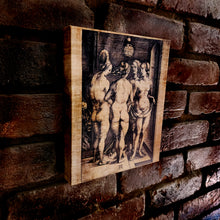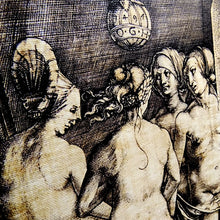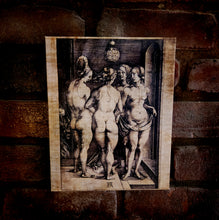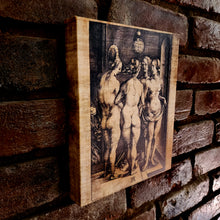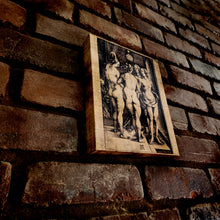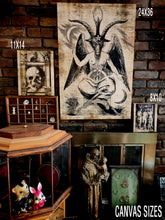
Harness the legendary power of the occult with Albrecht Dürer's iconic print, "The Four Witches". Delve into the mysterious world of magic with this classic piece featuring three naked ladies initiates, dated 1497 and adorned with skulls and bones. Feel the power and witness the timeless beauty of the underworld through the eyes of a master artist. Get your hands on this remarkable reproduction and summon your inner witch today!
Goth up any room with art printed on top-quality canvas gallery wraps. Each wrap is made with finely textured, artist-grade cotton substrate resulting in outstanding clarity and detail. Available in multiple sizes, these closed-back canvases are built with a patented, solid support face and are excellent for indoor use.
*Many of these originals are hundreds of years old so it's a given they would be in need of some polishing. Each reproduction print has been digitally scanned or photographed from the original and we’ve touched them up to eliminate any significant blemishes, distortions, tears, or missing parts.
FOR SHIPPING ORDERS - PLEASE NOTE THIS ITEM IS MADE TO ORDER AND WILL BE SHIPPED SEPARATELY.
Naked Ladies by Albrecht Dürer - This print may show three witches initiating a young woman into their circle, although their identity is unknown. It is the first engraving Durer ever made that he dated. On the sphere above their heads is the date 1497, but the accompanying letters ‘O.G.H.’ have defied explanation. The skulls and bones scattered at their feet are indicators of magic and invocation, whereas the burning devil in the lower left reiterates the presence of evil. The classically inspired pose is reminiscent of The Three Graces, and their beauty sets these women apart from the traditional idea of witches as grotesque. (1471 - 1528) -
The Four Witches (German: Die Vier Hexen), or The Four Naked Women, The Four Sorceresses, or Scene in a Brothel, are titles given to a 1497 engraving by the German Renaissance artist Albrecht Dürer. One of his earliest signed engravings shows four nude, exuberant women gathered conspiratorially in a circle in a confined interior setting, perhaps a bathhouse, which appears to have entrances from either side. Although clearly erotic, a small horned demon, perhaps representing temptation, is positioned in the left-hand portal, peering out and holding what may be a hunting object, and is engulfed in flames.
Although the engraving has been subject to prolonged and significant scholarly analysis, it remains enigmatic, and there is nothing in his later writings to indicate his intent. There is no consensus as to its subject matter or its intended meaning, with art historians associating it with either witch-hunting or figures from classical mythology. The women stand underneath a suspended globe or sphere, and before an open stone window, which, given the human skull and thigh bone placed across from it, maybe a gateway to death, and that the women are engaged in some nefarious scheme, perhaps linked to the 1487 inquisition treatise Malleus Maleficarum. The alternative view is that the women represent Greek or Roman goddesses, perhaps Hecate, patroness of evil magic, poisonous plants, and ghosts, or her earthly counterpart Diana.





